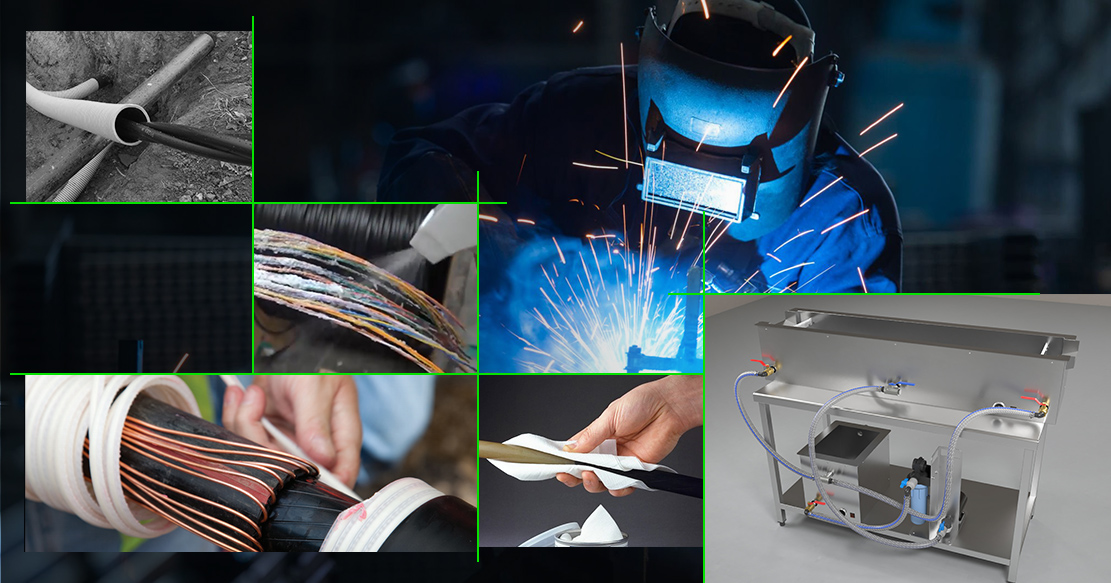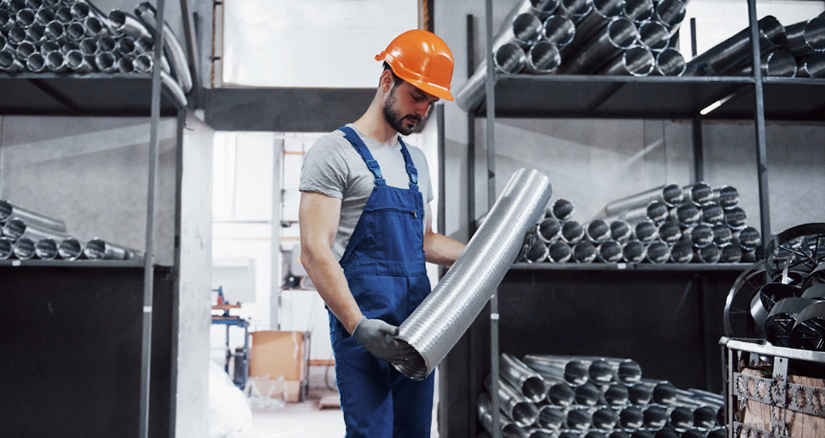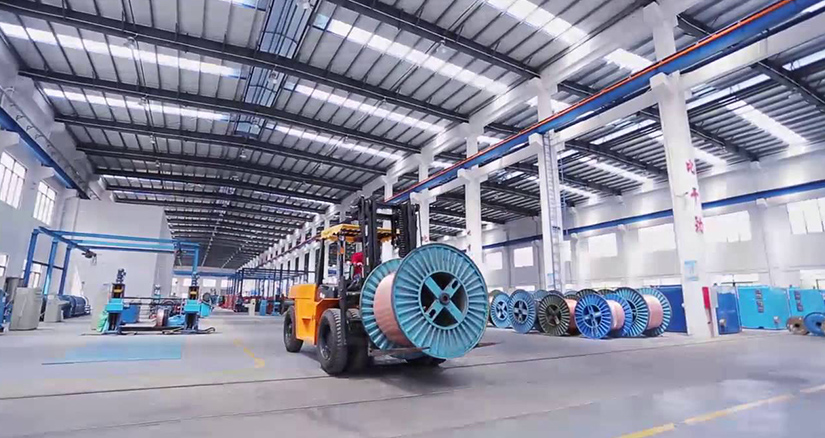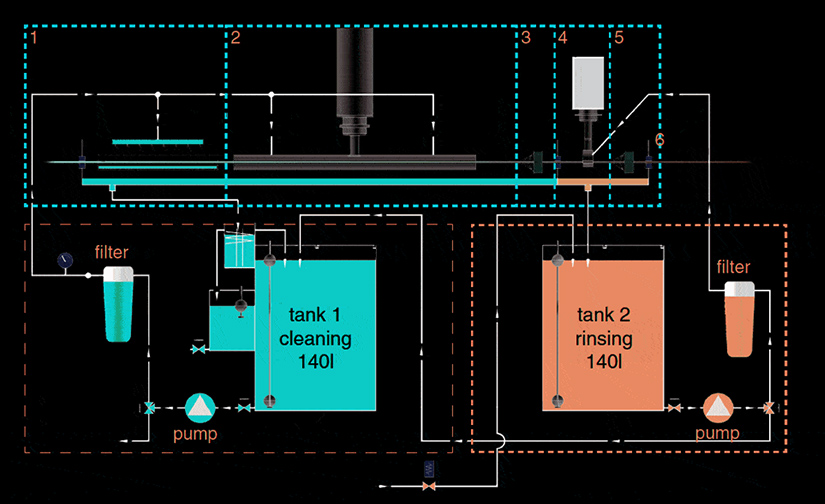
Importance of Wire Cleaning and Use of Ultrasonic Method
Wire cleaning is one of the vital processes in wire manufacturing to increase their performance, quality, and longevity. Traditional wire cleaning method, a difficult task included spray washing, dipping, electrolytic cleaning, and vapor degreasing.
Ultrasonic cleaning methods comprising some of the strengths of traditional cleaning methods made the cleaning process easy, efficient, and effective. The ultrasonic method gets widely used across various industries, from wire and cables to steel and automobile. Ultrasonic cleaning is fast, compatible with several materials, and commonly used in wire production.
Importance of Wires Cleaning before Extrusion, Galvanising or Welding Process
Wire manufacturing involves the drawing process to give the desired thickness to the wire. Wire drawing includes a metal rod and pulls the wire through dies to achieve the appropriate wire thickness. And during this drawing process, lubricants and other contaminants stick to the wire surface. Typically, a sodium or calcium-based lubricant gets pressed deeply into the material surface and is challenging to remove. In a few cases, liquid lubricants are in use that are easy to remove.
For further processing of wires, such as galvanizing, extrusion, or welding wires, lubricant residues need to get cleaned off. The wire production process cannot continue unless contaminants get removed, raising the need for inline cleaning. Spray washing and dipping are a few traditional cleaning methods followed. But wire manufacturers prefer ultrasonic cleaning for deep cleaning and getting an effective solution.
Ultrasonic Cleaning and its Need in Various Industries
Ultrasonic cleaning is an environmentally friendly alternative for cleaning continuous materials, like wires, cables, tapes, or tubes. The ultrasonic power of Ultrasonic machines generates cavitation that removes lubrication residues like oil or grease, soaps, stearates, or dust.
Cavitation is a physical phenomenon. It occurs when there is a fluctuating high-pressure region oscillating in short periods. It creates tiny bubbles or voids that implode instantaneously, producing small and powerful shockwaves. These shockwaves chip away debris from the part being closed. In addition, the pollution particles disperse in the cleaning liquid, and particles flush.
Need of Ultrasonic Cleaning in Various Industries
The high effectiveness of ultrasonic cleaning in removing materials like oil, dust, dirt, chemical residue, grease, carbon deposits, rust, metal particles, calcium deposits, etc., makes it preferable for various industries.
Automotive Industry

Ultrasonic systems can clean heavily contaminated engine parts with carbon deposits, oil residue, and hardened grease. They do not require acidic chemicals and deliver consistent and effective removal of contaminants. Ultrasonic cleaners in the automotive industry use industrial strength action to

Clean carbon deposits from engine parts and carburetors.

Safely clean aluminium parts.

Thoroughly clean small apertures, holes, and crevices.

Clean sensitive parts, plastic, and wiring without any damage.
Steel Industry

The steel industry uses ultrasonic cleaning machines for precision cleaning over regular service cleaning practices. The application in the steel industry is

Remove rust and corrosion from various steel components, even the tiniest crevices within the machinery.

Ultrasonic cleaning removes the operational issue of the steel industry, i.e., the building up of limescale.

Ultrasonic baths are suitable for cleaning steel rods and wires in production.
Wire and Cables Industry

Wire manufacturers were using classical wire drawing soap process, having drawbacks like health and environmental concerns, high energy consumption, etc. Ultrasonic cleaning helps avoid these drawbacks of traditional cleaning.
Ultrasonic cleaning is used for various applications in the wire industry, for stainless steel wires or oil-tempered wire before the heat treatment or final product such as welding wires. It is also preferable for aluminum alloy and copper wire to remove lubricant oil from a wet drawing machine or forming process.
Process of Ultrasonic Cleaning

The ultrasonic cleaning process uses cavitation induced by alternating compression and rarefaction cycles at ultrasonic frequencies. Ultrasonic frequencies are sound waves vibrating at 20KHz or higher. In the process, the part gets immersed in a tank filled with cleaning solution. And the cleaning solution concentration, tank temperature, and immersion time get carefully controlled for the required cleaning effect.
Parts of an Ultrasonic Cleaning Machine
An ultrasonic cleaner, irrespective of type, form, function, and application, consists of mainly two parts: the Components that generate the acoustic waves and the components that hold the liquid and parts to get cleaned.
Ultrasonic Transducers
An ultrasonic transducer converts electrical or mechanical energy into an ultrasonic vibration. Two main types of transducers used for cleaning are piezoelectric and magnetostrictive. They use specific materials to create minute changes in their geometry.
Ultrasonic Generator
The ultrasonic generator receives power and converts it into a suitable form for energizing the transducer at the desired frequency. We need to change the power supply frequency to the appropriate range depending on the type of contaminant removed and the mechanical strength of the part.
Cleaning Solution and Workpiece Tank
The tank contains the cleaning solution and part to get cleaned. The tank should be durable to resist erosion from cavitation and corrosion-resistant to withstand chemical attacks from the cleaning solution.
Ultrasonic Cleaning Heater
Heat gets supplied by the heating elements integrated into the tank assembly. Heat should be high enough to promote increased cavitation, cavitation intensity, and chemical solution cleaning ability. And should be low enough to prevent the degradation of special compounds in the cleaner.
Types of Ultrasonic Machines
Ultrasonic machines can operate at different frequency ranges and use different cleaning solutions. The three main types of ultrasonic machines are
Single-tank Ultrasonic Cleaners
These are standalone machines suitable for cleaning small to medium-sized parts. Small-scale applications like jewelry, laboratory equipment, and surgical equipment cleaning- only need a cleaning tank.
Multi-tank Ultrasonic Cleaner
They have separate tanks for different steps of the cleaning process. The three-tank system is the most common, where each tank performs cleaning, rinsing, or drying.
Immersible Ultrasonic Cleaners
They have detached ultrasonic transducers and generator systems for new cleaning systems to add an ultrasonic cleaning function or for retrofitting existing ultrasonic cleaning systems to improve cleaning performance.
Benefits of Wire Ultrasonic Cleaning
Ultrasonic cleaning brings some key benefits. And some of them are as follows.
 Thorough Removal of Contaminants
Thorough Removal of Contaminants
Some applications like wire cleaning require mid-production removal of contaminants for galvanization, extrusion, or annealing process and some post-production for usage. In this process, cavitation bubbles reach each part of the wire’s surface, ensuring no area is left contaminated. Removed contaminants get dispersed in the solution preventing them from adhering again to the object.
 Compatibility with Various Materials
Compatibility with Various Materials
Ultrasonic cleaning is a gentle process and is compatible with most materials. We need to select the appropriate detergent as per requirement. An alkaline solution can remove most contaminants with the wire production, but we need a harsh detergent for oxide removal.
 Compact Solution
Compact Solution
Ultrasonic cleaners are compact and require minimum additional components such as a reservoir and pump stand. They are suitable for inline solutions inserted at the desired point in the wire manufacturing process.
Wire Cleaning Ensure Their Long Working Life
Wire and cable manufacturers should maintain proper cleaning and lubrication to ensure their working life and performance. Gloster Cables, well-known in the wires and cables domain, follows a stringent wire & cables cleaning process to improve wires performance. Gloster uses advanced Ultrasonic methods to wire cleaning during mid-production or post-production, as required to maintain product quality.
CONTACT US